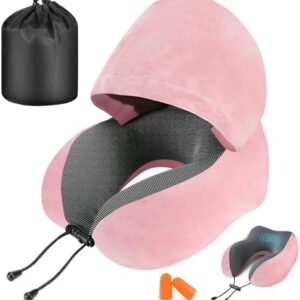If you’re worried that you will be unable to do basic travel tasks (say, making a 30-minute connection in another terminal), contact your airline a few weeks before your departure. They’re required to help folks who need assistance with moving around the airport, going through security, getting on and off the plane, navigating baggage claim, and handling luggage, according to the US Department of Transportation.
3. Pack a plane survival kit.
If your symptoms flare up mid-flight, you’ll want to be prepared with your go-to pain medication. OTC non-steroidal anti-inflammatory drugs (NSAIDs), like ibuprofen, can reduce inflammation and help in the moment, Sean Sanderson, MD, an interventional spine and sports physiatrist, at Atlantic Health System in Kinnelon, New Jersey, tells SELF. NSAIDs are generally safe for most people to take, but if you have a medical condition like acid reflux or kidney disease, check with your doctor first, as they can sometimes make your symptoms worse, Dr. Cayme says.
You can also try OTC topical products that contain inflammation-fighting or numbing ingredients like Aspercreme Back Patches. Your doctor also might recommend a more heavy-duty medication, like a muscle relaxer, if you’ve got a huge travel day ahead of you or your pain is super intense. Just be sure to take it exactly as prescribed, Behenna says.
You can also use a lumbar pillow to help your lower back, Dr. Sanderson says. Airplane seats famously have a shape that doesn’t adhere to the natural curvature of your spine. (So when you’re in one, your muscles in that area have to work harder to keep you in alignment.)4 While you can find travel back pillows on sites like Amazon, Gray gets support from a rolled-up scarf. Another option? Pack a cold gel pack or an empty hot water bottle (you can politely ask the attendant to fill it for you and hope for the best) if those things tend to ease your aching.
4. Move around before and during your flight.
Since you’ll likely be sitting a long time on the plane, try to keep active in the hours and even minutes before you board, Dr. Sanderson says. Go for a walk or do some gentle stretches prior to calling your Uber—extra flexibility in your hips and core can help minimize pain. (Here are 15 yoga poses that can help with back pain.) When you get to the airport, “walk a bit, go to the gift shop, get some food,” he suggests. Movement keeps your muscles warm and loose, which can cut back on discomfort. Gray also makes sure to do planks and cat-cow stretches on travel days.
If you’re able to, try to sneak in a few lunges or walk with long, exaggerated strides when pre-boarding starts, Behenna suggests. “You might get some funny looks,” she says, but these movements in particular can help keep your hip flexors limber and get your blood flowing.5
As soon as the seatbelt sign goes off, get up and walk around, and then repeat that every 30 minutes if you can, Dr. Cayme suggests. When you’re sitting again, touch your toes, shift your weight from one hip to the other, or squeeze your shoulder blades together periodically, Dr. Sanderson suggests—anything you can do to not remain totally rigid for long periods.
5. Pay attention to how you sit.
You may be tempted to curl up to get cozy in-flight, but Dr. Cayme says that can wreck your back. Instead, keep your feet planted firmly on the ground (no crossing!) with your knees at right angles, he suggests. This position takes the pressure off your pelvis, Behenna adds, which minimizes straining and helps it stay aligned.6 If your feet don’t touch the ground, prop them up with your carry-on, if possible. And don’t forget the lumbar support pillow!
6. Plan for your arrival.
You’ll probably be fairly stiff upon landing, so try to keep moving once you’re on the ground too, Behenna says. Try those hip-focused moves we mentioned earlier at the baggage claim, or do a few trunk rotations.7 One of Behenna’s favorite is one you can do in your hotel room: Lie on your back with your knees bent into your chest, and then rotate them from side to side.





